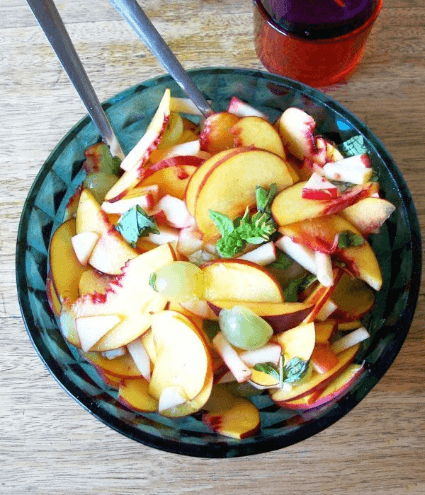Most people don’t think much about their bones until something goes wrong. Yet strong, healthy bones are the foundation of an active and vibrant life.
Osteoporosis—literally “porous bone”, affects over 200 million people in the world today, resulting in the likelihood of 1 in 3 women and 1 in 5 men experiencing an osteoporosis-related fracture in their lifetime.
The good news is with the right support, bones can be nourished, rebuilt, and healed.
Join us to hear more.
To see how we can restore strong bones, it helps to understand that they are living tissue, just like your heart or muscles. The difference is they look solid and permanent, so we often think of them as rock-like structures.
But, just like other tissues are always regenerating by replacing old dying cells with new fresh cells, bones are always being broken down by cells called osteoclasts and rebuilt by cells called osteoblasts. And this “remodeling” process goes on continuously, just like muscle repair after exercise or heart tissue adapting to increased activity.
Also, at the same time our muscles grow stronger when we challenge them with resistance, bones grow denser with weight-bearing activity. So, if we stop moving, both bones and muscles weaken.
Our bones are fed by blood vessels, which bring oxygen, nutrients, and hormones, just like they do for the heart and muscles. Without circulation, bones couldn’t heal or regenerate.
And, an important role our bones play is that they store and release minerals like calcium, phosphorus and magnesium, much the same way muscles store glycogen for energy. These minerals are essential to maintain a healthy blood pH as well as myriad metabolic functions. So, our bones serve as a reservoir of essential minerals as well as providing the solid structure we need to get around.
In the same way muscle fibres repair after a workout or a small heart injury heals, bones can heal from fractures. In fact, bone is one of the few tissues in the body that can completely regenerate itself, often stronger at the repair site.
So when you think of bones, instead of imagining stone pillars, it’s more accurate to see them as dynamic, living tissue—strong, flexible, and deeply interconnected with the rest of the body’s systems.
Knowing this, it’s clear that keeping our bones healthy is much more than avoiding fractures.
Osteoporosis happens when the bone breakdown process, that’s natural to healthy bones, outpaces bone rebuilding. That imbalance can be caused by a mix of lifestyle, diet, and medical factors.
In terms of lifestyle, sedentary living or lack of weight-bearing exercise impacts our bone health. And smoking, excess alcohol, and high caffeine all leach minerals from our bones.
From the diet perspective, low intake of calcium-rich whole foods like greens, beans, sesame and almonds leads to weaker bones.
Vitamin D deficiency from low sun exposure and low vitamin K2, which directs calcium into bones instead of arteries both result in poor bone health.
As we've mentioned before, diets high in animal protein and processed foods create acidity and calcium loss. This includes milk and dairy. Despite being high in calcium, research shows that countries with the highest rates of dairy consumption also have the highest rates of hip fracture, probably related to the acid load that animal products bring.
Excessive salt and soda consumption can also deplete minerals.
Most conventional treatments, like Fosomax, work by slowing down the cells (osteoclasts) that break down bone, but this doesn't restore the bone building process to it's healthy state.
These meds can result in improvement on bone density scans, but the bone that’s preserved is often older, more brittle bone rather than fresh, healthy bone.
Fortunately, bones can be strengthened and restored with the right inputs.
From a nutritional standpoint, we want to eat whole foods high in calcium like kale, bok choy, beans, and tahini.
We want to get adequate Vitamin D from safe sun exposure or supplementation.
Also, Vitamin K2 is important to help calcium get into bones and we can get that from fermented foods (natto is particularly high) or supplements . Keep in mind that kale and other leafy greens have high levels of K1, but not K2.
Adequate protein is necessary for healthy bones too and plant-based protein supports the bone matrix better than animal protein because of the lower acid load.
Some Lifestyle Practices that help build strong bones are things like weight-bearing exercise, as simple as walking, dancing, or hiking. Stepping it up even more, resistance training with weights stimulate bone growth.
Bones are not solid, fixed, unchanging structures —they are living, dynamic tissue that responds to care. Osteoporosis does not have to be a one-way path to decline. With nourishing foods, movement, and a healthy mindset, bones can regain density and strength at any age.
The recipe this week is a Summer Fruit Salad. Taking advantage of the fresh fruit in season here right now, we put together a delicious mix of peaches, plums, grapes and apples. Adding cucumber and celery and topping it with walnuts makes it a real treat!
To Your Amazing Healthy,
Bill and Connie

Summer Fruit Salad (Serves 2-4
- 1 cup peaches, diced
- 1 cup plums, diced
- 1 cup grapes
- 1 apple, diced
- ½ cup dried cranberries
- ½ cup walnuts
- ½ cup celery, diced
- ½ cup cucumber, diced
- juice of 1 lemon
Add the fruit, vegetables and walnuts to a large mixing bowl. Squeeze the lemon over it and mix well.
Serve as it is or over a bed of lettuce.

